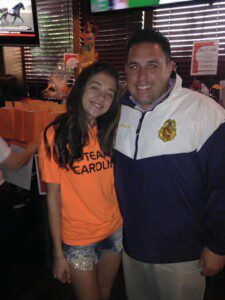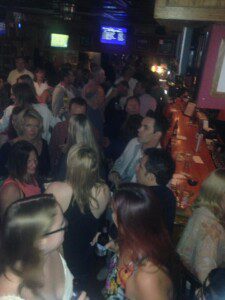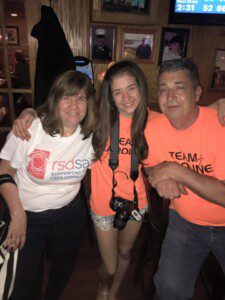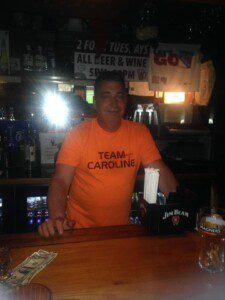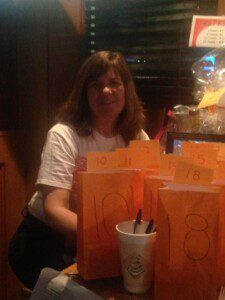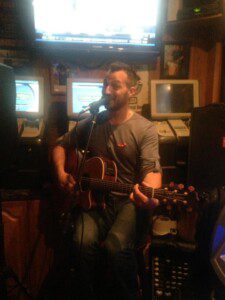 By Guest Blogger Brenda Refior
By Guest Blogger Brenda Refior
Brenda discusses her life before being diagnosed with RSD and all of the things she endured after a traumatic incident. Through all of this, Brenda is able to find hope and encourages readers to do the same. Find out how below.
Before I had RSD, I was a strong and happy person who loved life to the fullest. When I was nineteen, I tried out for an Olympic handball team at the Colorado Springs Olympic Training Center. I was accepted and asked to go to the Lake Placid training camp, but this conflicted with my wedding plans. I was young and felt that all of life was ahead of me, and decided not to go to Lake Placid. However, I continued to play sports and worked as much as I could.
In July 1983, I married and couldn’t have dreamed of a more beautiful wedding. A couple of years later, I started working for the local school district as a bus driver. I loved the kids and the people I worked with, and driving a school bus never got boring. But it was on a trip driving that school bus taking kids home at 5:30 at night that my life changed forever.
Stopping at an intersection, I pushed down on the accelerator, and five large sparks, fire and smoke covered my feet. I pulled over quickly, undid my seatbelt, and evacuated 25 kids from the bus.
Grabbing the fire extinguisher, I sprayed the bus as it filled with smoke, covering my body in white foam, as it floated back on me. Looking like a phantom ghost, I ran to check on the kids.
Since they hadn’t all grabbed their jackets, I jumped into the back of the smoky bus and retrieved them. No one stopped as I tried to flag down cars for help – they surely must have thought I was a ghost! Finally, police transferred the kids to a 7 Eleven where parents picked them up. I rode to the bus barn with the head maintenance supervisor. It was the most uncomfortable car ride of my life.
After receiving muscle relaxers for my aching arm, neck, back and stomach, I spent days getting worse. Most of the time, my hand was marbled and turned shades of blue and purple. It was colder than ice, yet it burned on fire, like thousands of little hot needles. Throughout this time, I continued to drive a school bus, received some commendations, and, I found out that I was pregnant!
My health got worse. My stomach burned and cramped, the diarrhea was unbearable, and I thought I was going to die. I ended up having an emergency gall bladder operation, and just two weeks later, an early C-section and exploratory surgery to see why I was having so much pain. They did not find anything.
A year later, my husband found me passed out on the bathroom floor. He rushed me to the hospital where I had major surgery. The doctors fixed a hiatal hernia, found a detached colon, (probably detached two years before when I put out the fire in the school bus), and took my appendix for the heck of it.
While in surgery, I flat–lined and they had a time bringing me back. I had a misty vision of four beings dressed in white. A strong voice said, “You will be judged, and you will judge yourself.” I thought of things that I knew were wrong that I had done to people in the past. I had to feel not only what it felt like to them, but also how it affected other people in their life. I just knew I had no chance to get into heaven. Then I got to see the good in my life. I felt the feelings of people I had been kind to or had helped, and I saw the ripple effect on other people in their life. I felt like I had made it to heaven, and I was so happy; I really can’t explain the feeling. Then the strong voice said, “You are not done. You still have something to do. You need to go back.” The next thing I knew, there was a nurse in the room and I told her what I had experienced. I asked her for a pencil and paper so I could write it down. This vision gave me faith, hope and inspiration.
Finally, in 1988, Dr. Toni McLallan, an expert on Reflex Sympathetic Dystrophy, diagnosed me with RSD. It was agony living with this pain for two long years, and nobody knew what was causing it. There was little known about RSD at the time. In the summer before I started my new job, I was strongly encouraged to spend a full month in Saint Francis Hospital’s Pain Therapy Program. There were two others in my group. I received pain meds and muscle relaxers right away. The other two were taken off their meds. It really scared me! I found out that one of them held up a pharmacy so he could get pain meds. He said he did it to make the pain go away, but he kept overdosing. Was I going to be like them in the future? Here I am on meds, great…! We swam in the morning and did physical therapy in the afternoon, and, in between, I had psychotherapy.
Bedtime was 9:00. I felt terrible that my two-year-old,Rachael, could only see me for a few precious moments a day. That was heartbreaking, to say the least. It was the longest month of my life.
I was in pain for two more years, and, once again, I thought I was going to die. My stomach burned and cramped, I had diarrhea and I couldn’t stop throwing up. I experienced sweating, passing out, and lengthy hospitalizations. I was no longer allowed to keep my job driving the school bus. It was making my right arm, neck and back pain worse. I missed driving and the kids so much. I loved that job. I was really down. I felt like I was inadequate and no good to anybody. I was offered a job in special education and I had to jump into it with everything I had, just to make myself feel like I was worth something.
While I hated to work and leave my daughter daily, my new job as a special ed. aide boosted my self-esteem. I worked there for three years and came to really love that job; the kids came to respect me. One young man I saw after school putting a butcher knife up his sleeve told me he was going to “take care of” the guy who had stolen his girl. I told him, “Listen, I’ll do my best to see that you don’t get into trouble over this at school, but you need to give me the knife.” In the end, he trusted me, listened to me, received a one-day suspension, and his uncle thanked me.
I suffered through a lot of pain working as an aide at the school. RSD was taking a toll on me. I’d work and then go home and crash. I would be in so much pain that I would come in the door after working all day and not be able to do anything at home. Poor Rachael wanted to spend time with me, but all I could do was take my meds and sleep. I joined one of the first RSD support groups in town for help. It scared me to join this group, being the youngest by sixteen years. All the ladies put their meds on the table and asked me, “What are you taking?” I kept quiet. I stayed with the group for two years, but found it a little intimidating and depressing. One woman, Shelley, had so much pain in her fingers that she could not move them. I promised myself that no matter how much pain I was in, I would work my limbs so I wouldn’t lose mobility. Let me tell you, the pain is so bad when your fingers and hands start to lock up, but you just do have to move them, because you won’t be able to use them otherwise.
Despite making a difference at school, my pain and exhaustion continued. RSD was taking a toll. The disease stole the job from me. I couldn’t do anything at home. This pain is like when one of your legs falls asleep and you have a painful tingling, achy, electrical feeling. The pain is extreme and lasts, not just seconds, but sometimes years! After four years of agony, I was willing to try a stimulator implant in my neck that would transmit an electrical current to the spinal chord. First, they put it on the Wrong Side! A month later there was a second surgery…even worse pain. I just felt like dying. This disease had robbed me not only of my health and job, but also of my ability to take care of myself. Thank goodness for my grandmother who was in her late eighties. She would say to me, “Let’s walk the mall. I need exercise!” So, we would walk the mall – and I thought I was helping her out! She was a wonderful woman.
Two years later, I discovered a doctor who agreed to take the stimulator out. I awoke from surgery and was able to use all my limbs – Thank God! I continued to see my psychiatrist who had me on meds, but I found real therapy in drawing and making mandalas, dream-catchers and presents. It gave me a sense of pride that I was able to give something I made to someone I loved.
Today, I go to a doctor who prescribes medicines that actually work. I’m able to concentrate better and control the pain better. My pain level is half what it was in my worst times. Sure, I have good days and some days my pain level is 5 to 7 on the pain scale, but I can handle that. My family and friends help me through the hard times, and now, I’m able to help them.
My faith in God and Jesus keeps me going all the time. It’s my faith and the memory of a promise that there is something more I have to do that gives me hope. There’s a reason I’m here right now, and it feels important for me to share my story. I want to tell others with RSD not to give up. Have a vision that supports you. My vision gave me hope. Never give up on hope.
Keep on going, no matter what. Don’t sit and lie down and die. Get up out of that chair, out of that bed. Keep yourself going. You’ve got to keep yourself going, and trust in God to help you make it through.
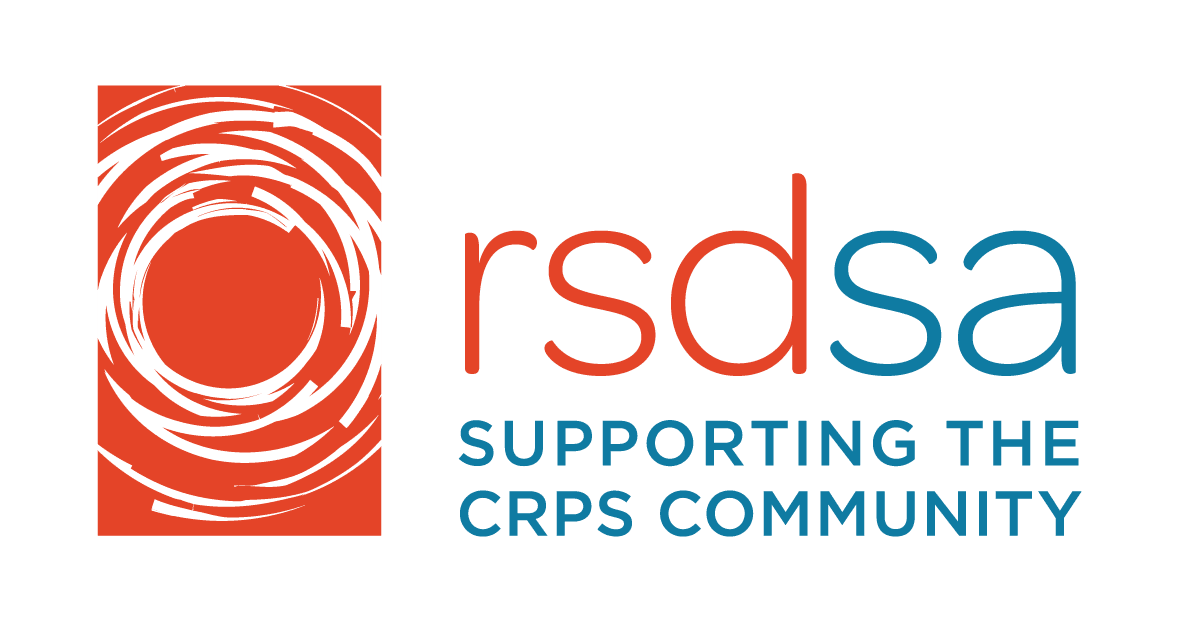
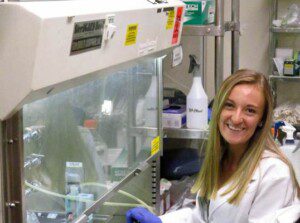 Written by Ashley Epping
Written by Ashley Epping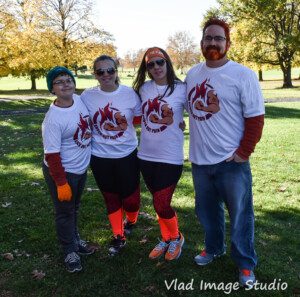 Making it more of a family affair, Sarah has stated that she never would have started this had it not been for her husband supporting her through and through. They have an amazing 5K committee that includes friends of theirs on top of family- Rob, Aubrey, Mike, and Kathy. Other friends continue to support them behind the scenes by sponsoring, campaigning, web designing, graphic designing, and being a shoulder to lean on when times get stressful or emotional.
Making it more of a family affair, Sarah has stated that she never would have started this had it not been for her husband supporting her through and through. They have an amazing 5K committee that includes friends of theirs on top of family- Rob, Aubrey, Mike, and Kathy. Other friends continue to support them behind the scenes by sponsoring, campaigning, web designing, graphic designing, and being a shoulder to lean on when times get stressful or emotional.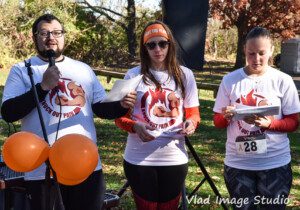
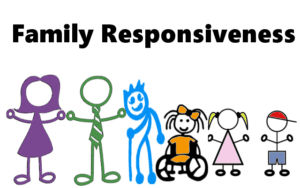 Written by Laura Lustig, PhD for the RSDSA blog.
Written by Laura Lustig, PhD for the RSDSA blog.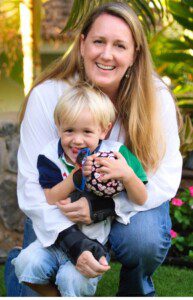 Interview Conducted by Samantha Barrett for the RSDSA blog.
Interview Conducted by Samantha Barrett for the RSDSA blog. JR: My new book is called “The Original MerKINS: A Field Journal.” It is a book that almost didn’t happen. It definitely could not have happened without the healers and doctors who have kept me in the light these last few years. (You’ll find some of them on the attached dedication page). For the last four years, I have been learning how to illustrate using my computer instead of painting. I am very tactile and love mixing and blending colors, and watching my art come to life. Drawing on a black tablet with my wooden hands and staring into a
JR: My new book is called “The Original MerKINS: A Field Journal.” It is a book that almost didn’t happen. It definitely could not have happened without the healers and doctors who have kept me in the light these last few years. (You’ll find some of them on the attached dedication page). For the last four years, I have been learning how to illustrate using my computer instead of painting. I am very tactile and love mixing and blending colors, and watching my art come to life. Drawing on a black tablet with my wooden hands and staring into a  computer monitor was nothing compared to painting. But, I learned to love it, thanks to an unexpected gift from a friend on Kaua’i. Last year, she gifted me a Great Dane puppy. I lost my Dane a few years ago and didn’t think I could handle training a puppy, but she knew more than I did that I needed him. One of the best tips I ever received (from the doctor who gave me the RSD diagnosis) was to keep in motion. It is too easy to stay in the pain posture (hunched inward, shoulders rolled forward, chin down) which brings on more pain. She encouraged me to walk with purpose with my shoulders back and chin up, and to swing my arms consciously left, right, left. I went from fearlessly windsurfing giant ocean waves in 30 knots of wind to… walking. Exciting, right? Until last year, I avoided the beach because it made me sad and reminded me of my life before RSD. My new puppy got me excited about walking, but walking around town on the hard surfaced sidewalks set my feet on fire. So, I ended up taking him to the beach where I could walk barefoot in the warm, soft sand. We walk and swim about 5 miles a day now. I mention the walking because it was on our daily beach walks that I found inspiration for my new book. Walking is still painful, but the beach has become a safe haven where I can push through the pain, clear my head, and feel the sun, which I am once again madly in love with. My new book is about a “Merologist” who falls into an underwater world called “MerKingdom,” where she meets a series of sea friends (MerKINS) who are animals with mermaid tails, like “MerIggy,” a pig with a mertail, and “MerLar Bear,” a polar bear with a mertail. The book is actually the story of my battle with RSD and all of the characters are based on real people in my life. The first MerKIN who we meet is MerLaLa, a mertailed koala, who is really my friend Lady LaLa, who helped save my life when she gifted me my new puppy. And since I know you will ask, MerCess, a brightly colored horse who draws with her octopus-like tentacled mane, is me. Disappearing into MerKingdom is what has brought me the greatest healing. There have been many times that I wanted to give up. I still have what I call Lost Days, days when the pain is too great to do much of anything. Drawing and typing can flare up my RSD, but sometimes RSD pain comes out of nowhere without any triggers at all. MerKingdom gave me a place to disappear into and took my mind away from the pain. Dreaming up MerKINS gave me something interesting to draw and transformed drawing on a boring black tablet into a magical experience. I chose to format the book in a shabby chic, scrapbook style so the imperfections of my drawings would be hidden and seem intentional. I chose to tell the story in a journal style, so that I could work on any pages at any time, even in an RSD brain fog, because I didn’t need to remember where I left off. It is easily the most challenging book I have ever made, but it is also very easily the best work of my life. I received my advanced printed copy of my new book just last week and as I turned each page, I was absolutely overwhelmed with the magnitude of what I had done. I create the impossible. If I can do this, you can do anything.
computer monitor was nothing compared to painting. But, I learned to love it, thanks to an unexpected gift from a friend on Kaua’i. Last year, she gifted me a Great Dane puppy. I lost my Dane a few years ago and didn’t think I could handle training a puppy, but she knew more than I did that I needed him. One of the best tips I ever received (from the doctor who gave me the RSD diagnosis) was to keep in motion. It is too easy to stay in the pain posture (hunched inward, shoulders rolled forward, chin down) which brings on more pain. She encouraged me to walk with purpose with my shoulders back and chin up, and to swing my arms consciously left, right, left. I went from fearlessly windsurfing giant ocean waves in 30 knots of wind to… walking. Exciting, right? Until last year, I avoided the beach because it made me sad and reminded me of my life before RSD. My new puppy got me excited about walking, but walking around town on the hard surfaced sidewalks set my feet on fire. So, I ended up taking him to the beach where I could walk barefoot in the warm, soft sand. We walk and swim about 5 miles a day now. I mention the walking because it was on our daily beach walks that I found inspiration for my new book. Walking is still painful, but the beach has become a safe haven where I can push through the pain, clear my head, and feel the sun, which I am once again madly in love with. My new book is about a “Merologist” who falls into an underwater world called “MerKingdom,” where she meets a series of sea friends (MerKINS) who are animals with mermaid tails, like “MerIggy,” a pig with a mertail, and “MerLar Bear,” a polar bear with a mertail. The book is actually the story of my battle with RSD and all of the characters are based on real people in my life. The first MerKIN who we meet is MerLaLa, a mertailed koala, who is really my friend Lady LaLa, who helped save my life when she gifted me my new puppy. And since I know you will ask, MerCess, a brightly colored horse who draws with her octopus-like tentacled mane, is me. Disappearing into MerKingdom is what has brought me the greatest healing. There have been many times that I wanted to give up. I still have what I call Lost Days, days when the pain is too great to do much of anything. Drawing and typing can flare up my RSD, but sometimes RSD pain comes out of nowhere without any triggers at all. MerKingdom gave me a place to disappear into and took my mind away from the pain. Dreaming up MerKINS gave me something interesting to draw and transformed drawing on a boring black tablet into a magical experience. I chose to format the book in a shabby chic, scrapbook style so the imperfections of my drawings would be hidden and seem intentional. I chose to tell the story in a journal style, so that I could work on any pages at any time, even in an RSD brain fog, because I didn’t need to remember where I left off. It is easily the most challenging book I have ever made, but it is also very easily the best work of my life. I received my advanced printed copy of my new book just last week and as I turned each page, I was absolutely overwhelmed with the magnitude of what I had done. I create the impossible. If I can do this, you can do anything. SB: That is absolutely incredible. I love that you used it to tell your story. How have you used your talent to cope with CRPS related pain?
SB: That is absolutely incredible. I love that you used it to tell your story. How have you used your talent to cope with CRPS related pain?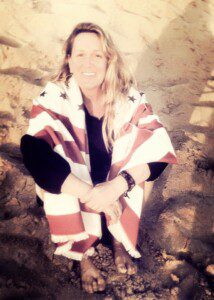
 By Matthew for the RSDSA blog.
By Matthew for the RSDSA blog.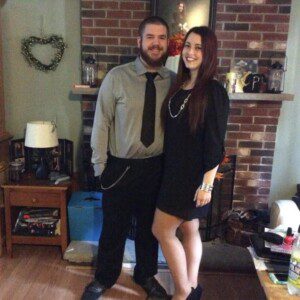 By Samantha Barrett for the RSDSA blog.
By Samantha Barrett for the RSDSA blog.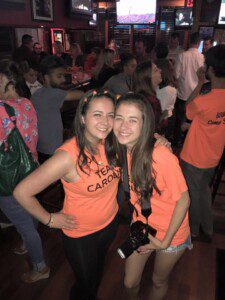 Written by Caroline Bert for the RSDSA blog.
Written by Caroline Bert for the RSDSA blog.
